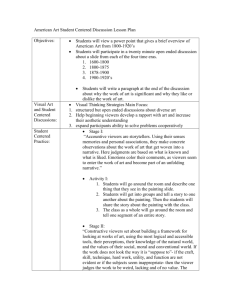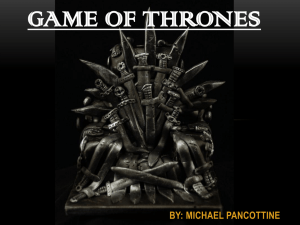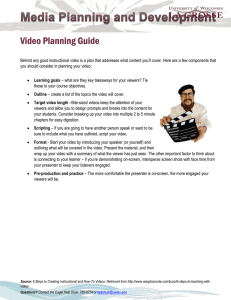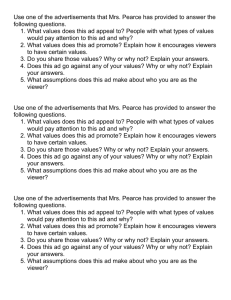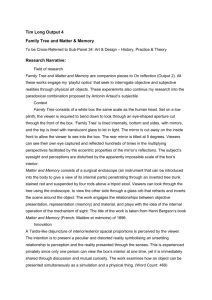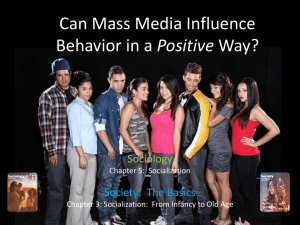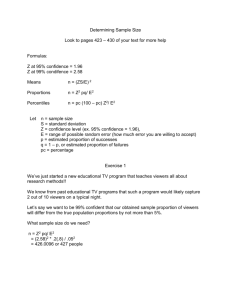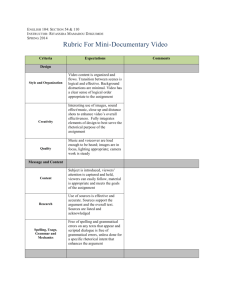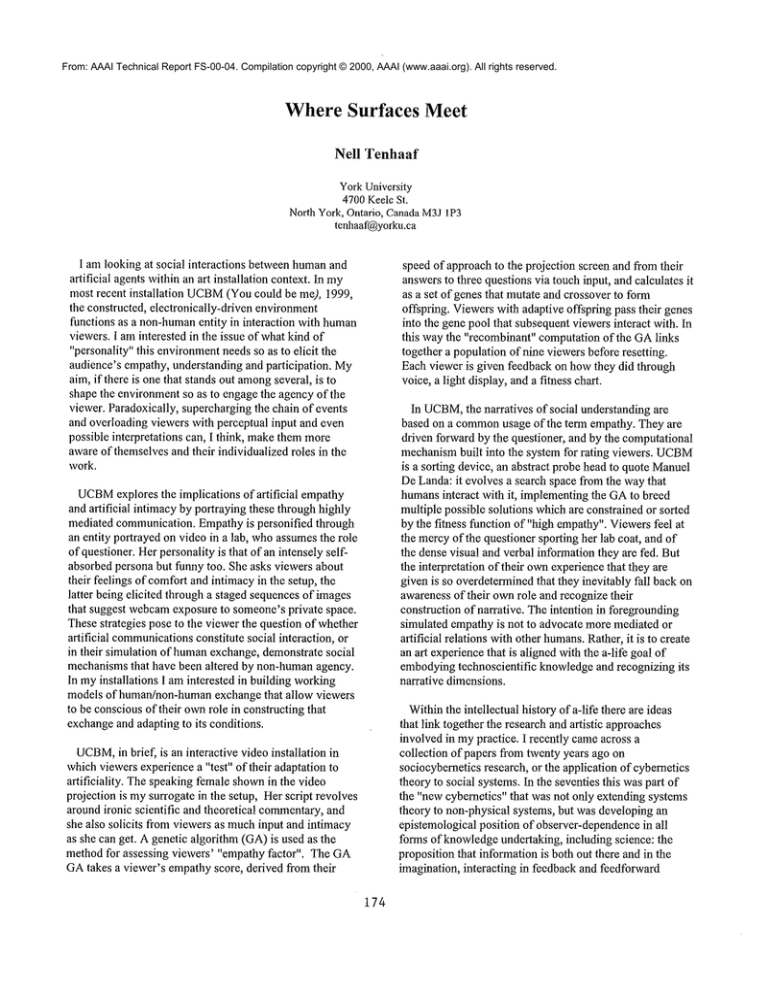
From: AAAI Technical Report FS-00-04. Compilation copyright © 2000, AAAI (www.aaai.org). All rights reserved.
Where Surfaces
Meet
Nell Tenhaaf
YorkUniversity
4700KeeleSt.
NorthYork, Ontario, CanadaM3J1P3
tenhaaf@yorku.ca
I amlooking at social interactions betweenhumanand
artificial agents within an art installation context. In my
most recent installation UCBM
(You could be me), 1999,
the constructed, electronically-driven environment
functions as a non-human
entity in interaction with human
viewers. I aminterested in the issue of what kind of
"personality" this environmentneedsso as to elicit the
audience’s empathy,understanding and participation. My
aim, if there is one that stands out among
several, is to
shape the environmentso as to engagethe agencyof the
viewer. Paradoxically, superchargingthe chain of events
and overloading viewers with perceptual input and even
possible interpretations can, I think, makethemmore
awareof themselvesand their individualized roles in the
work.
UCBM
explores the implications of artificial empathy
and artificial intimacyby portraying these throughhighly
mediated communication.Empathyis personified through
an entity portrayed on video in a lab, whoassumesthe role
of questioner. Herpersonality is that of an intensely selfabsorbed persona but funny too. She asks viewers about
their feelings of comfortand intimacyin the setup, the
latter being elicited througha staged sequencesof images
that suggest webcamexposure to someone’sprivate space.
Thesestrategies pose to the viewer the question of whether
artificial communications
constitute social interaction, or
in their simulation of humanexchange,demonstratesocial
mechanismsthat have been altered by non-humanagency.
In myinstallations I aminterested in building working
models of human/non-human
exchange that allow viewers
to be consciousof their ownrole in constructing that
exchangeand adapting to its conditions.
speed of approachto the projection screen and from their
answersto three questionsvia touch input, and calculates it
as a set of genesthat mutateand crossover to form
offspring. Viewerswith adaptive offspring pass their genes
into the gene pool that subsequentviewersinteract with. In
this waythe "recombinant"computationof the GAlinks
together a populationof nine viewersbefore resetting.
Each viewer is given feedback on howthey did through
voice, a light display, anda fitness chart.
In UCBM,
the narratives of social understandingare
based on a common
usage of the term empathy. They are
driven forward by the questioner, and by the computational
mechanismbuilt into the system for rating viewers. UCBM
is a sorting device, an abstract probehead to quote Manuel
De Landa:it evolves a search space from the waythat
humansinteract with it, implementingthe GAto breed
multiple possible solutions whichare constrained or sorted
by the fitness function of "high empathy".Viewersfeel at
the mercyof the questioner sporting her lab coat, and of
the densevisual and verbal information they are fed. But
the Interpretation of their ownexperiencethat they are
given is so overdeterminedthat they inevitably fall back on
awarenessof their ownrole and recognize their
construction of narrative. The intention in foregrounding
simulated empathyis not to advocate moremediated or
artificial relations withother humans.Rather,it is to create
an art experiencethat is aligned with the a-life goal of
embodyingtechnoscientific knowledgeand recognizing its
narrative dimensions.
Withinthe intellectual history of a-life there are ideas
that link together the research and artistic approaches
involved in mypractice. I recently cameacross a
collection of papers from twenty years ago on
sociocyberneticsresearch, or the application of cybernetics
theory to social systems.In the seventies this was part of
the "newcybernetics" that was not only extending systems
theory to non-physical systems, but was developing an
epistemological position of observer-dependencein all
forms of knowledgeundertaking, including science: the
proposition that informationis both out there and in the
imagination, Interacting in feedbackand feedforward
UCBM,
in brief, is an interactive video installation in
whichviewersexperiencea "test" of their adaptation to
artificiality. The speakingfemale shownin the video
projection is mysurrogate in the setup, Her script revolves
aroundironic scientific and theoretical commentary,and
she also solicits from viewers as muchinput and intimacy
as she can get. A genetic algorithm(GA)is used as the
methodfor assessing viewers’ "empathyfactor". The GA
GAtakes a viewer’s empathyscore, derived from their
174
loops; the idea that a participant in research mayact
conditionally as an external observer, movingbetween
positions. Wemaynowbe familiar with someof this
thinking in relation to the sciences, throughculturally
situated philosophersand theoreticians of science. But the
proposition that a point of viewis alwaysprovisional, that
a humanis never in a single place of outlook or
enunciation,I think is still a rather marginalposition in the
sciences.
Myperhapsutopic idea is that the visibility of artists
aligned witha-life researcherscan shift the scientific
worldviewfurther in the direction of observer dependence.
At the sametime, this intellectual collaboration could
accentuate the art space as an immersiveand relational
social space. Interaction with observersis, after all, key to
whatartists do. In myinstallation environments,I try to
generate a sense of multi-layered meaningnot for its own
sake but so as to indicate to the audiencea realistic
correspondencewith social complexity. As source
material, I will continueto study a-life agents in interactive
space, wherefeatures of artificiality and humannesscross
over, and also genetic algorithmsfor generating a social
collective (i.e. breedinga population)and for tracking and
giving feedbackto viewers.
175

